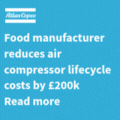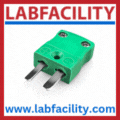
Posted to News on 26th Oct 2011, 00:00
Sensorless closed loop control
With low cost machines from the far east providing increasingly stiff competition for the west's OEMs, trying to compete on price is becoming less and less of an option. The alternative is to add value to machines by increasing their performance, flexibility, efficiency and availability. The modern variable speed drive then becomes an essential tool for the OEM, and as Tom Skelton from KEB UK explains, sensorless closed loop control is one of the most important functions available.

The variable speed drive has long been recognised as a critical piece of equipment on modern machinery. Much more than simply a means to turn the motor, it is a gateway into the machine itself, capable of significantly increasing the performance of the machine and offering sophisticated monitoring of the process - for example, highlighting the onset of mechanical problems that could be source of unplanned downtime. Drive manufacturers offer a vast array of advanced functions within their products as standard and users will find it well worthwhile to look more closely at the benefits these features could offer, because they hold the key to boosting competitive advantage.
One function that offers the potential to increase performance and at the same time reduce costs is Sensorless Closed Loop control. It is well understood that running a motor in closed loop gives the best speed control and torque performance, but traditionally this has required the addition of either an encoder or a resolver to provide the necessary feedback. This adds cost to the system and requires additional cabling effort. However there are other more significant drawbacks to this approach. Firstly, the motor has to be specifically designed to accommodate the feedback device and that's inevitably going to mean a more expensive motor. In addition, encoders and resolvers are vulnerable to vibration, and couplings can also be a source of problems. The heat transferred by the motor itself to the feedback device electronics can also be a cause of inaccuracies and eventually failure.
Eliminating the feedback device
Sensorless Closed Loop control offers a solution, eliminating the need for the feedback device. It works by first building a mathematical model of the motor - typically as part of an auto-tuning process within the inverter. Then, in operation, the stator current is continuously measured and from this the flux and torque generating current can be calculated. The loop is then closed by comparing these values with the expected values provided by the dynamic motor model. The current is then regulated to match the required motor speed and torque.
Forms of sensorless closed loop control have been available on numerous drives for standard induction motors (also referred to as asynchronous or squirrel cage motors) for many years. That is not to say that all algorithms are equal. If OEMs are to maximise their competitive advantage, then it is important to know what makes any given one better or worse than another. We can measure the effectiveness of the algorithm by its ability to provide constant torque across the full speed range and by its speed of response to step changes in the load. As an example, the torque characteristics of KEB's F5 range of inverters is detailed in the graph below, alongside a graph of the dynamic response behaviour of a load. What we see are high speed stability and an extremely fast response comparable to the very best traditional closed loop systems.
Performance advantages
The key to this impressive performance is the use of a very fast microprocessor combined with KEB's highly optimised, highly tuned software. Its very well developed motor model has been perfected over many years of R&D. The result is much higher performance than other sensorless closed loop strategies. Typical applications include: extruder main drives, crusher drives, centrifuges, test systems, mixer units, meat cutters and mincers, heat pumps, hydraulic pumps, generators and machine tools. The system works with a wide range of motor types from many manufacturers.
A traditional failing of Sensorless Closed Loop control is the inability to use it with permanent magnet synchronous motors (servo motors). This is in part because of the low inductance of these motors, making it more difficult to accurately calculate the required flux and torque generating current values. The result is that engineers have been less able to reap the benefits a synchronous motor brings. For example, a synchronous motor is vastly more efficient, significantly smaller, and is more dynamic. The use of synchronous motors on a given machine could represent a significant competitive advantage, but not if operating the motor in closed loop control means the addition of physical feedback devices.
KEB's algorithm, however, is able to handle the lower inductances of these motors with ease, enabling users to reap all the benefits of this vastly superior motor technology, while eliminating the cost of the physical feedback device and its associated cabling and interface. Potential applications include driven tools, textile machines, extruder drives, injection moulding and blow moulding machines, and high frequency pump drives in compressors, screws and vacuum pumps. The same algorithm is also suitable for use with linear motors, opening up a vast range of new applications.
Sensorless vector control is now offered as a standard feature in KEB large powere drives, and is available in the medium power drives for only a very small additional cost. This provides OEMs with a very real means of achieving a significant competitive advantage.





